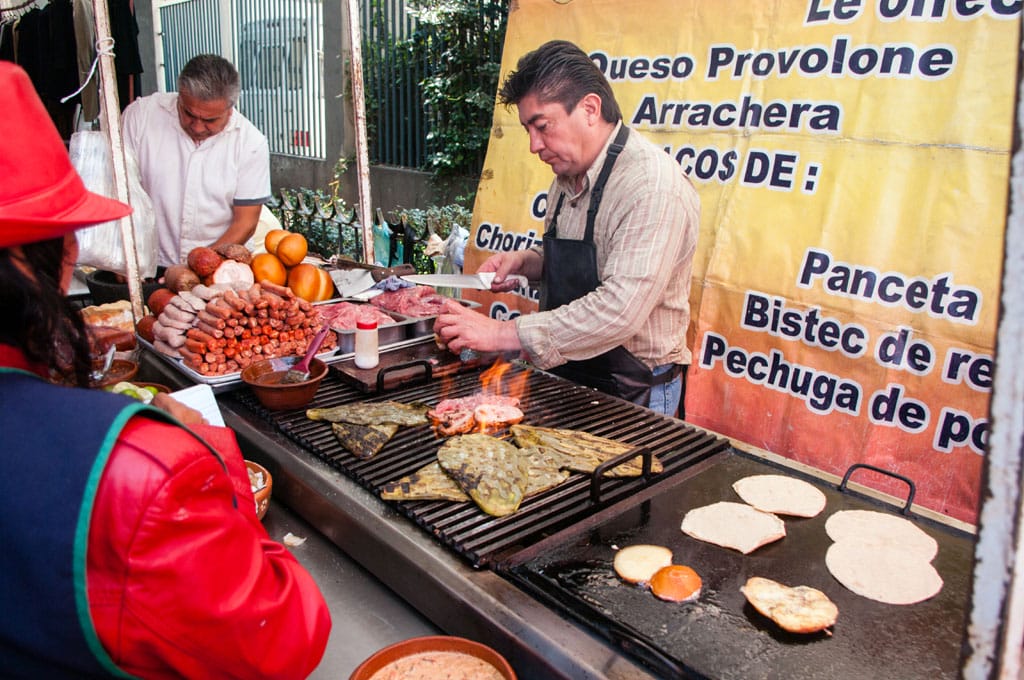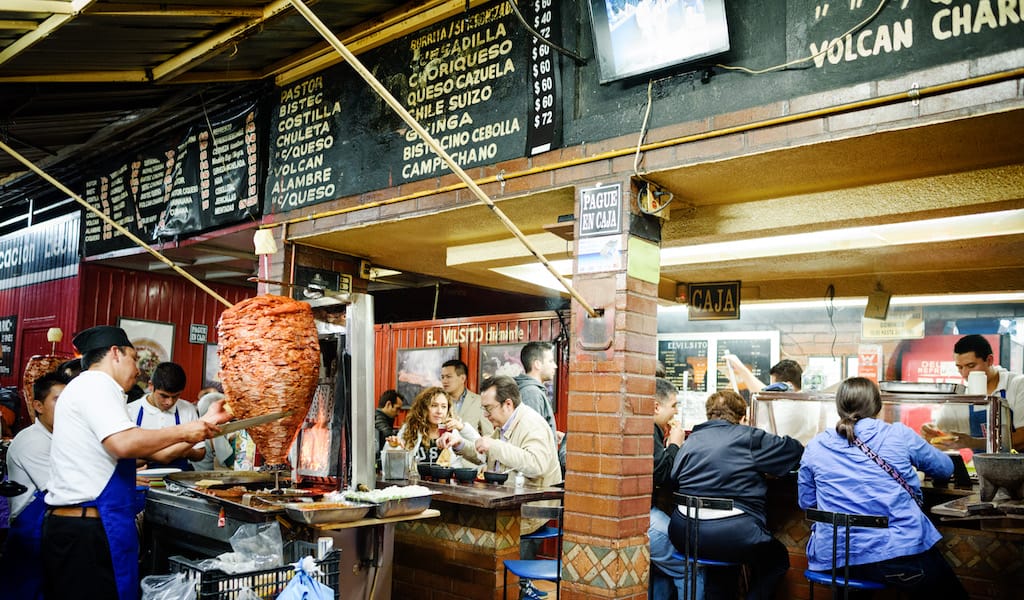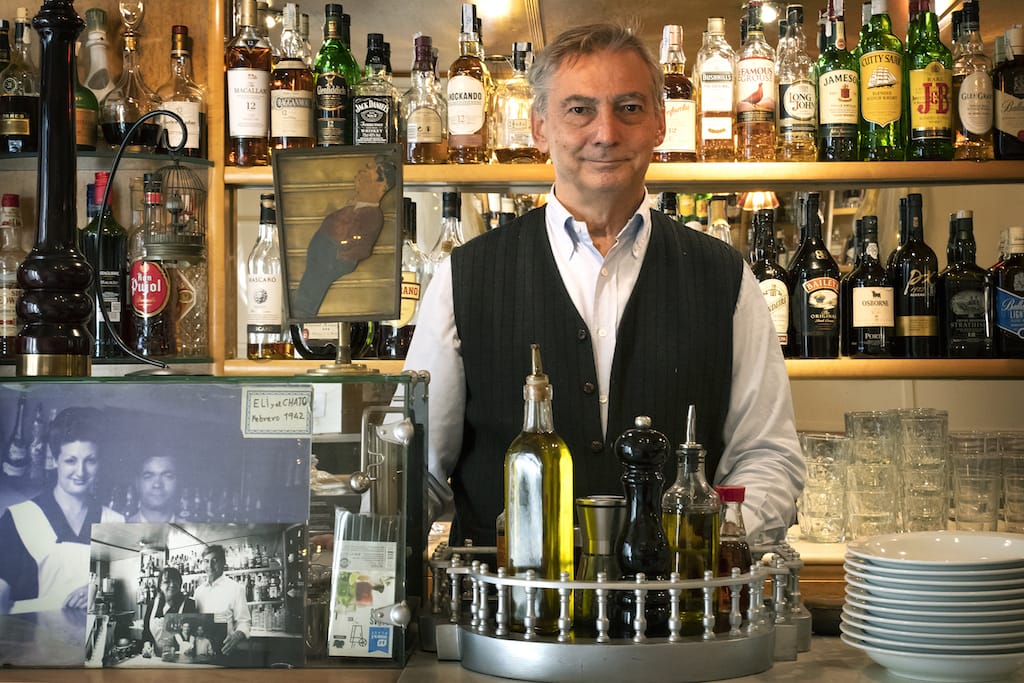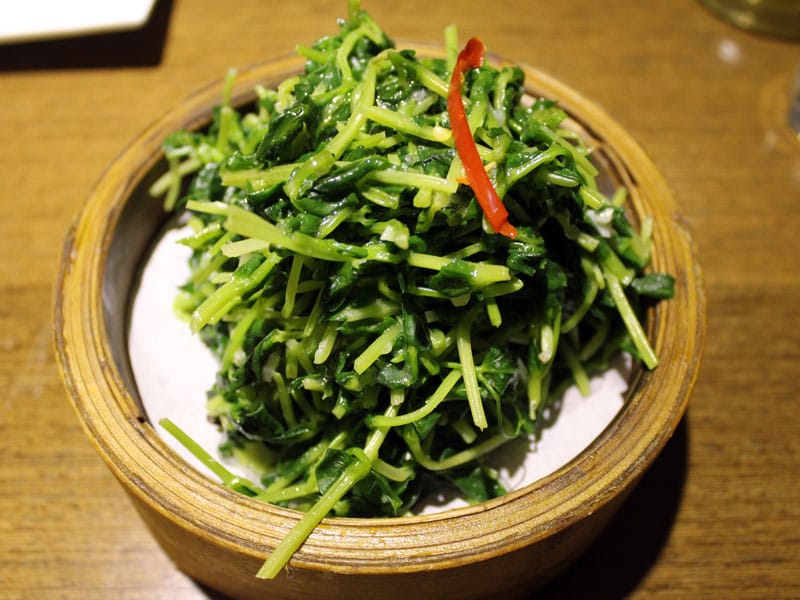Update: This spot is sadly no longer open.
Tacos are everywhere in Mexico City, and though the options are many – chicken, al pastor, carnitas, carne asada – the basic ingredients tend to be the same wherever you go. That’s why, as we were walking the aisles of Tianguis La Raza on a Sunday morning, El Parrillón caught our attention. A big sign announced tacos – nothing new there – but besides the classic chicken andbistec, cecina and arrachera – all different cuts of beef – El Parrillón (roughly, “The Big Grill”) offers several Argentine-style sausages and cured meats, including chistorra, a small spicy sausage, and panceta, pork belly (like Italian pancetta), as well as Spanish chorizo, which, unlike the fresh Mexican sausage, is cured. But for us the real draw was griddled provolone, which we had never seen on a taco before and happens also to be one of our favorite cheeses.
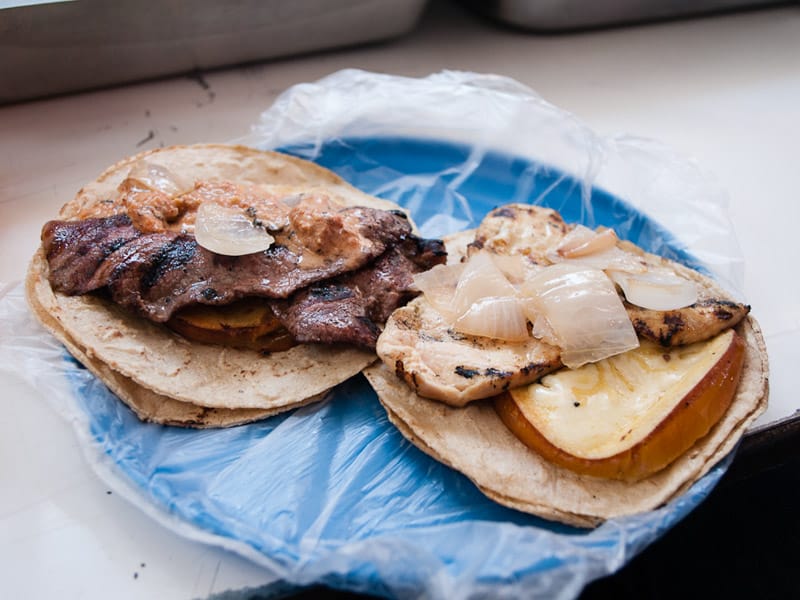
We asked Azul, our waitress, what we should try first and without hesitation she recommended the panceta and provolone. The provolone is smoked, so even sliced thin it keeps its shape on the griddle. We found another pleasant surprise among the condiments, a creamy, spicy and smoky peanut and chipotle salsa – a highly unusual invention by owner Gustavo Trejo and the perfect complement to the taco fillings. There were also roasted chile de árbol and habanero with pineapple salsas, along with the common toppings of lime wedges, grilled nopales (cactus) and onions.
Those cured meats and sausages carefully arrayed at El Parrillón’s stand and grilled to order are made by Trejo’s family in Hidalgo, the small, rural desert state about two hours north of Mexico City. They have been making chorizos and panceta for as long as he can remember, but it was Trejo’s uncle who started producing the meats commercially. (There’s no Argentine connection; his uncle recognized an opening in the market and cannily seized it.) Trejo helped with distribution and seven years ago hit upon the idea of starting a taco stand as a showcase for the meats. El Parrillón then made its debut at several tianguis. Trejo is especially proud of the quality of his artisanal ingredients – like that provolone, which comes fist-sized, in the traditional gourd shape, and is made by a small producer in the neighboring state of Querétaro.

Besides booths at street markets and a permanent one in Colonia Tabacalera, El Parrillón caters parties and special events all over the city. Soon Trejo plans to open a storefront to distribute his family’s chorizo and bacon. “Nobody else in the city sells these kinds of products with the same quality,” he says. “So I’m sure we’re going to do well.” We are too.
This review was originally published on October 3, 2013.
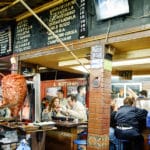 January 14, 2020 Going Deep
January 14, 2020 Going Deep
As the calendar year turns over, we’ve grown accustomed to the barrage of lists telling […] Posted in Istanbul, Special category March 1, 2022 El Chato
March 1, 2022 El Chato
When El Chato, considered to be Barcelona’s oldest Basque restaurant, opened in 1941 in […] Posted in Barcelona March 12, 2013 Bai Jia Qian Wei
March 12, 2013 Bai Jia Qian Wei
Mention Anhui to most Shanghai residents, and you’ll most likely get a response along […] Posted in Shanghai
Published on September 29, 2015
Related stories
January 14, 2020
Istanbul | By Culinary Backstreets
IstanbulAs the calendar year turns over, we’ve grown accustomed to the barrage of lists telling us where to travel during the next 12 months. Often these places are a country or even a whole region – you could spend an entire year exploring just one of the locations listed and still barely make a dent.…
March 1, 2022
BarcelonaWhen El Chato, considered to be Barcelona’s oldest Basque restaurant, opened in 1941 in El Fort Pienc, the neighborhood was a decidedly industrial one. In fact, the restaurant’s main clientele for decades were Basque truck drivers who were dropping off or picking up goods in the area. Much has changed since the 40s. El Fort…
March 12, 2013
ShanghaiMention Anhui to most Shanghai residents, and you’ll most likely get a response along the lines of, “My āyí [maid] is from there.” Migrant workers from Anhui, one of the country’s poorest provinces, flood into Shanghai tasked with building the city’s skyline, massaging the clenched shoulders of white-collar workers and washing our dishes. Despite the…







































